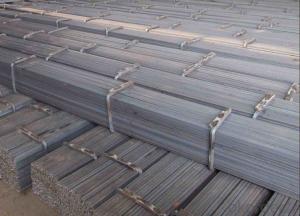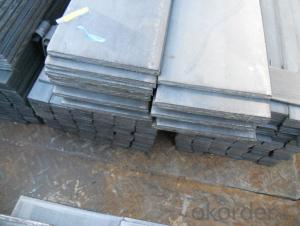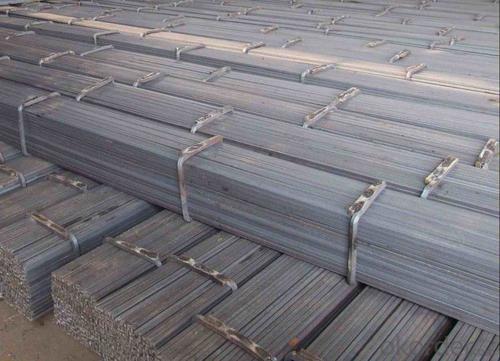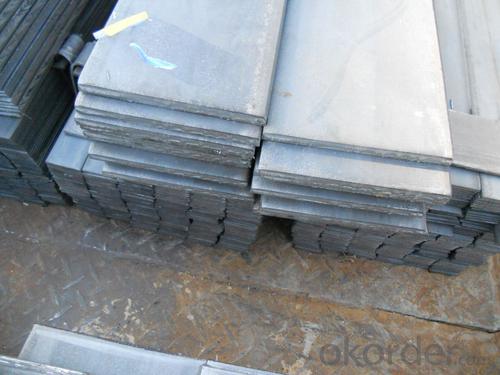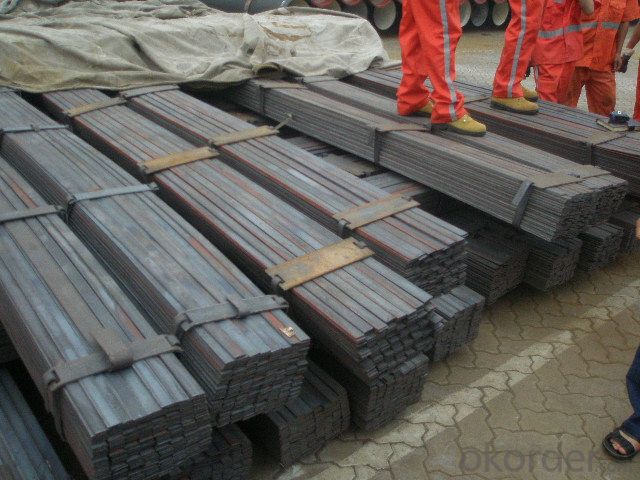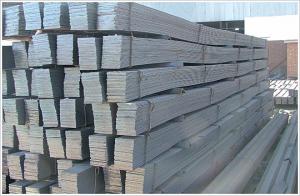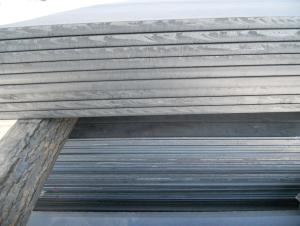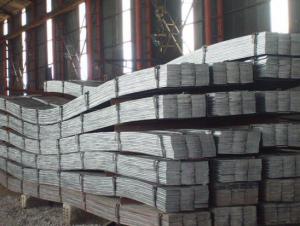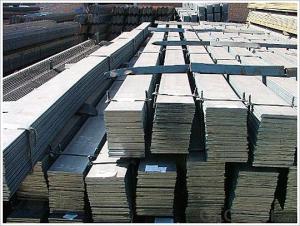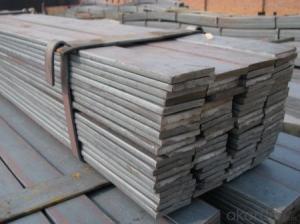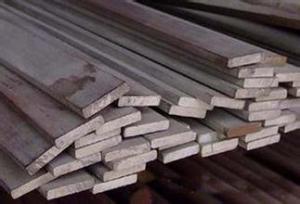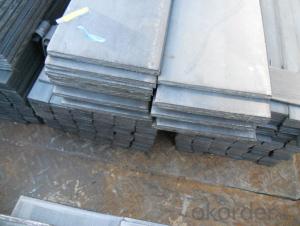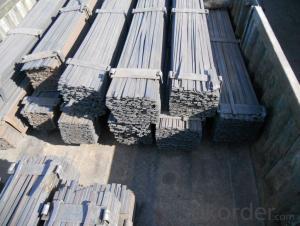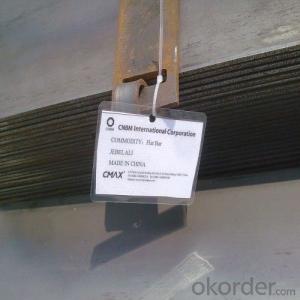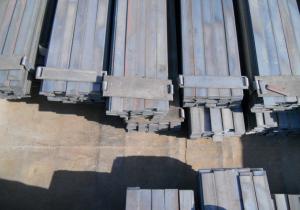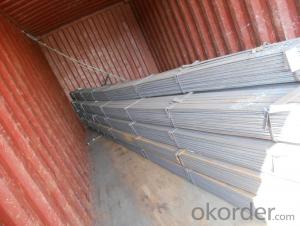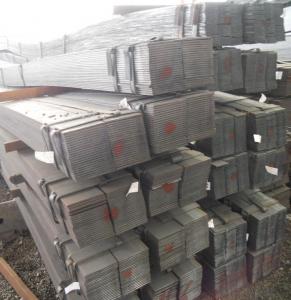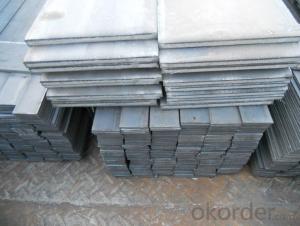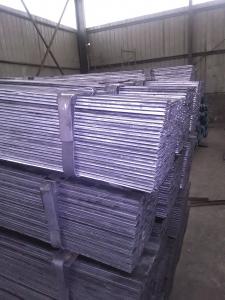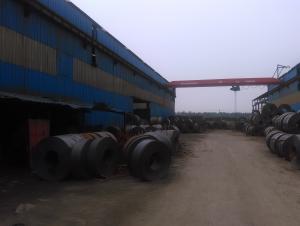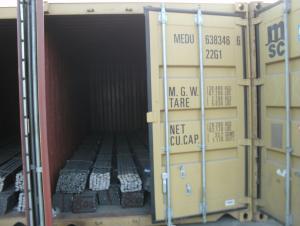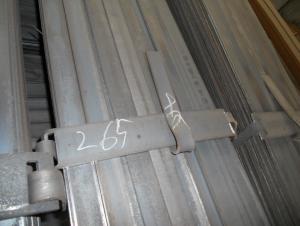Carbon Steel Flat Bar in Grade Q235 with High Quality
- Loading Port:
- Tianjin
- Payment Terms:
- TT OR LC
- Min Order Qty:
- 25 m.t.
- Supply Capability:
- 100000 m.t./month
OKorder Service Pledge
OKorder Financial Service
You Might Also Like
Specification of Carbon Steel Flat Bar
Commodity: Carbon Steel Flat Bar
Standard: GB,JIS,ASTM,
Material: Q235,SS400 or Equivalent
Brand name: FLATSPACE
Origin place: China
Thickness: 3mm-30mm
Width:20mm-200mm
Length: Max 12m
Certification: SGS/BV
Chemical composition of Q235
Alloy No | Grade | Element(%) | ||||
C
| Mn
| S
| P
| Si
| ||
Q235
|
B
|
0.12—0.20 |
0.3—0.7 |
≤0.045 |
≤0.045
|
≤0.3
|
Physical properties of Q235
Alloy No | Grade | Yielding strength point(Mpa) | Tensile strength (Mpa) | Elongation after fracture(%) | ||||||
Thickness (mm) | Thickness (mm) | |||||||||
≤16 | >16--40 | >40--60 | >60--100 | ≤16 | >16--40 | >40--60 | >60--100 | |||
≥ | ≥ | |||||||||
Q235 |
B |
235 |
225 |
215 |
205 |
375--500 |
26 |
25 |
24 |
23 |
Above sheets show the technical data of Q235,we can also provide other materials similar to Q235.
Usage/Applications of Carbon Steel Flat Bar
Widely used for construction;
Machinery manufacturing;
Iron tower steel structure;
Shipbuilding; Steel grating;
Staircase;
Bridge;
Viaduct;
Railway spare parts;
Boilers making etc.
Packaging & Delivery of Carbon Steel Flat Bar
Packaging Details: The Steel Flat Bars are packed in bundles and loaded in 20 feet/40 feet container, or shipped by bulk cargo ,also we can do as customer's requirements.
Delivery Details:30~45 days upon the receipt of buyer payment by T.T. or L/C.
- Q: Can steel flat bars be used for making handrails?
- Indeed, handrails can be crafted using steel flat bars. Renowned for their strength and durability, steel flat bars prove to be an excellent choice of material for handrail construction. The malleability of these bars allows for effortless shaping and welding, enabling the creation of diverse handrail designs and styles. Furthermore, the sleek and contemporary look of steel flat bars adds a touch of elegance to staircases and walkways, thereby enhancing their overall visual appeal. Nevertheless, it is crucial to verify that the steel flat bars adhere to the required safety standards and regulations governing handrails in your particular area.
- Q: What are the different types of finishes available for steel flat bars?
- There are several types of finishes available for steel flat bars, including hot rolled, cold rolled, galvanized, and polished.
- Q: Can steel flat bars be used for shelving or storage systems?
- Yes, steel flat bars can indeed be used for shelving or storage systems. Steel flat bars are known for their strength and durability, making them an excellent choice for heavy-duty applications such as shelving and storage systems. They can provide reliable support for storing heavy items and can withstand significant weight without bending or warping. Additionally, steel flat bars can be easily welded or bolted together to create custom shelving configurations to suit specific storage needs. Their resistance to corrosion also ensures a long-lasting and low-maintenance solution for organizing and storing various items.
- Q: What are the different methods of fastening steel flat bars to other materials?
- There are several methods of fastening steel flat bars to other materials, including welding, bolting, riveting, adhesive bonding, and using specialized connectors such as steel brackets or clips.
- Q: How to determine the application direction of steel grid plate
- The length of a steel grid refers to the direction that carries the flat steel, and the width of the steel grid refers to the size measured in the direction along the cross bar (usually the cross bar with a twist Jiao Fanggang)
- Q: Can steel flat bars be polished?
- Yes, steel flat bars can be polished. Polishing steel flat bars involves using abrasive materials such as sandpaper or polishing compounds to remove any imperfections or roughness on the surface of the bars. The process typically involves gradually working through different grits of sandpaper or using a polishing wheel with a polishing compound to achieve a smooth and shiny finish. Polishing steel flat bars can enhance their appearance and make them more aesthetically pleasing.
- Q: Are steel flat bars available in different grades of corrosion resistance?
- Yes, steel flat bars are available in different grades of corrosion resistance.
- Q: Can steel flat bars be used in the automotive industry?
- Yes, steel flat bars can indeed be used in the automotive industry. They are commonly used for various applications such as frames, chassis, suspension components, and body panels due to their strength, durability, and versatility. Steel flat bars provide structural support and stability, making them suitable for use in the automotive manufacturing process.
- Q: What are the different types of surface finishes available for steel flat bars?
- There are several types of surface finishes available for steel flat bars, each serving a specific purpose and providing distinct benefits. Some of the most common types include: 1. Hot Rolled: This is the most basic surface finish, achieved by heating the steel to high temperatures and then rolling it. It leaves a rough, scale-like surface that is suitable for applications where aesthetics are not a concern. 2. Cold Rolled: In contrast to hot rolled, cold rolled steel undergoes the process of rolling at room temperature. This results in a smoother and more polished surface finish, making it ideal for applications that require a sleek appearance, such as in architectural projects or decorative items. 3. Galvanized: Galvanization involves coating the steel flat bar with a layer of zinc to protect it from corrosion. This surface finish provides excellent durability and resistance to rust, making it suitable for outdoor applications or in environments where the material is exposed to moisture. 4. Polished: As the name suggests, polished steel flat bars have a highly reflective and shiny surface. This finish is achieved through mechanical polishing or buffing, resulting in a smooth and lustrous appearance. Polished steel flat bars are commonly used in decorative or ornamental applications, as well as in the manufacturing of precision components. 5. Powder Coated: Powder coating involves applying a dry powder onto the steel flat bar and then curing it under heat, resulting in a durable and attractive finish. This surface finish provides excellent resistance to abrasion, chemicals, and UV radiation, making it suitable for a wide range of applications, including outdoor furniture, automotive parts, and machinery. 6. Painted: Painting is another common surface finish option for steel flat bars. It involves applying a layer of paint to protect the material from corrosion and enhance its appearance. Painted steel flat bars are often used in construction, manufacturing, and general fabrication projects. 7. Anodized: Anodizing is a process commonly used for aluminum, but it can also be applied to steel flat bars. It involves creating an oxide layer on the surface of the material, which enhances its corrosion resistance and improves its aesthetics. Anodized steel flat bars are commonly utilized in architectural applications or in industries where a lightweight yet durable material is required. These are just a few examples of the different types of surface finishes available for steel flat bars. The choice of finish depends on the specific requirements of the application, including aesthetics, durability, corrosion resistance, and functionality. It is essential to consider these factors when selecting the appropriate surface finish for a steel flat bar to ensure optimal performance and longevity.
- Q: Can steel flat bars be used in the manufacturing of agricultural machinery?
- Indeed, when it comes to the manufacturing of agricultural machinery, steel flat bars are a viable option. Their versatility and durability make them well-suited for a range of applications within the agricultural industry. Specifically, they can be utilized in the construction of frames, supports, brackets, and other essential structural components found in machinery like tractors, combines, tillers, and harvesters. The superior strength and rigidity of steel flat bars ensure that the machinery remains resilient and long-lasting, even in the harshest agricultural environments. Furthermore, their ability to be easily welded, bent, and shaped to meet specific design requirements renders them a preferred choice in the manufacturing of agricultural machinery.
Send your message to us
Carbon Steel Flat Bar in Grade Q235 with High Quality
- Loading Port:
- Tianjin
- Payment Terms:
- TT OR LC
- Min Order Qty:
- 25 m.t.
- Supply Capability:
- 100000 m.t./month
OKorder Service Pledge
OKorder Financial Service
Similar products
Hot products
Hot Searches
Related keywords
